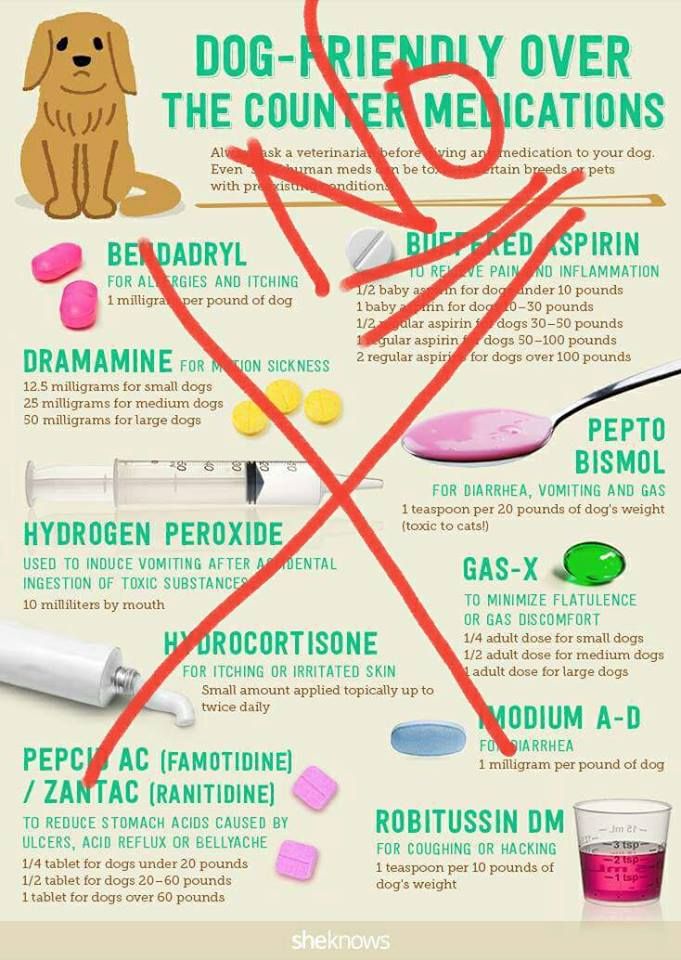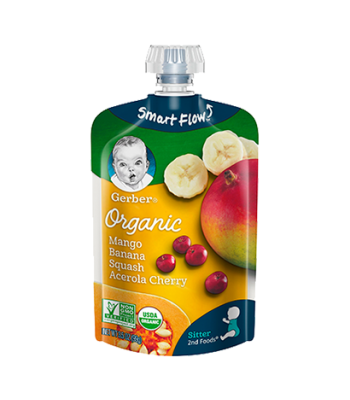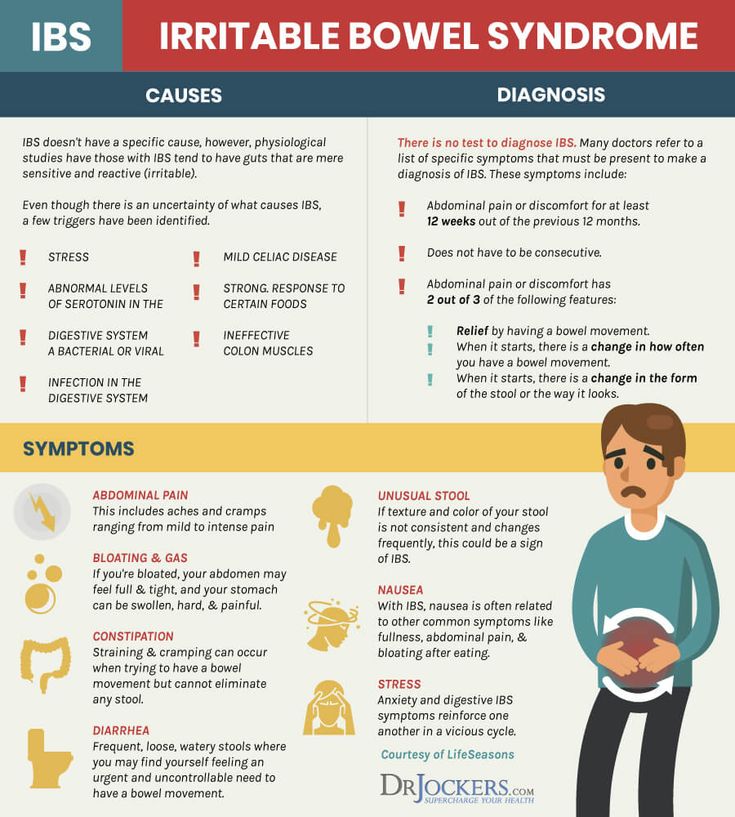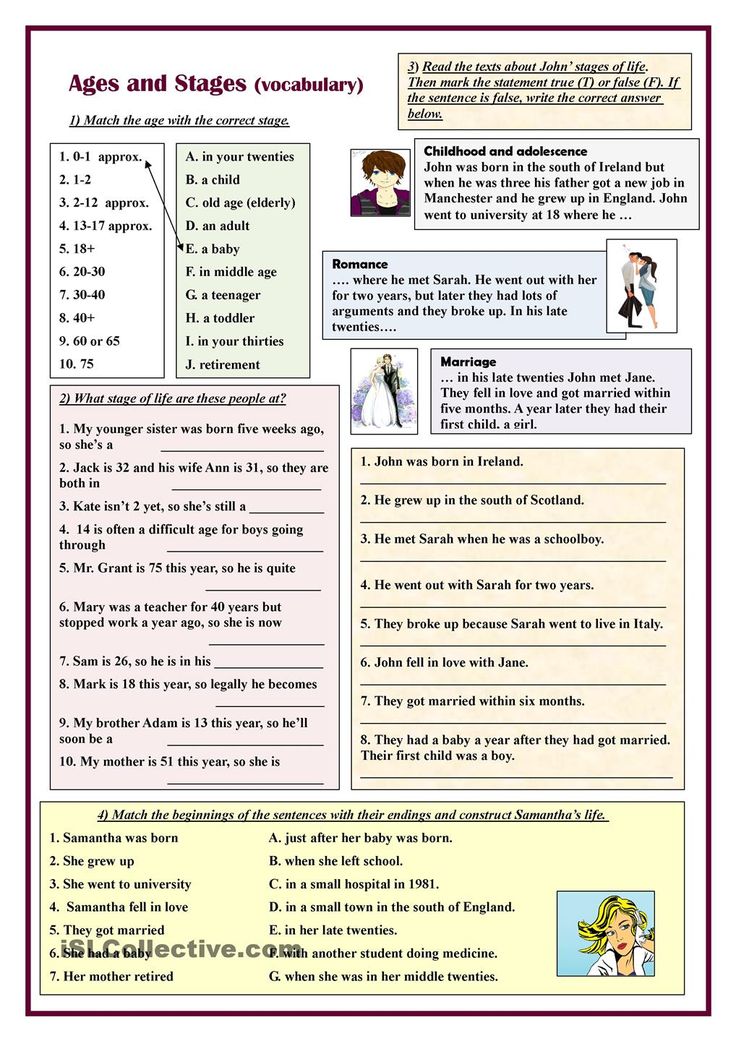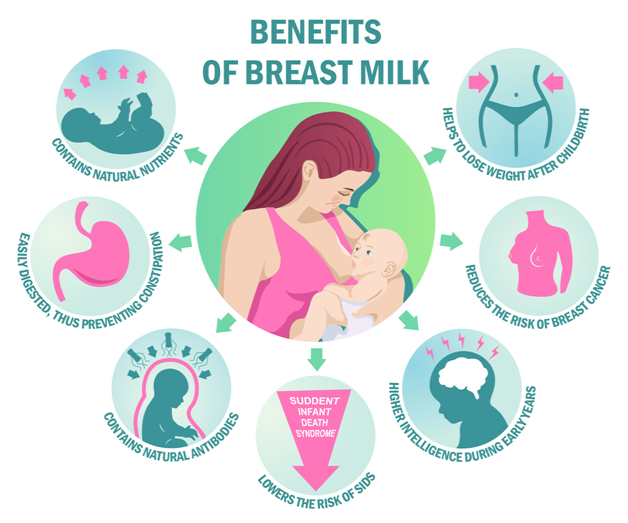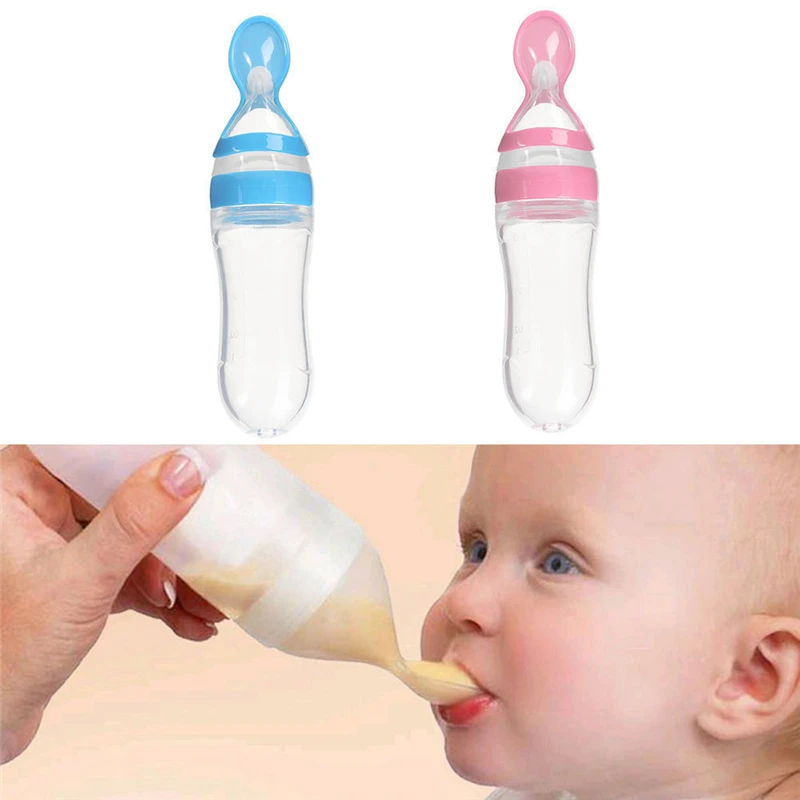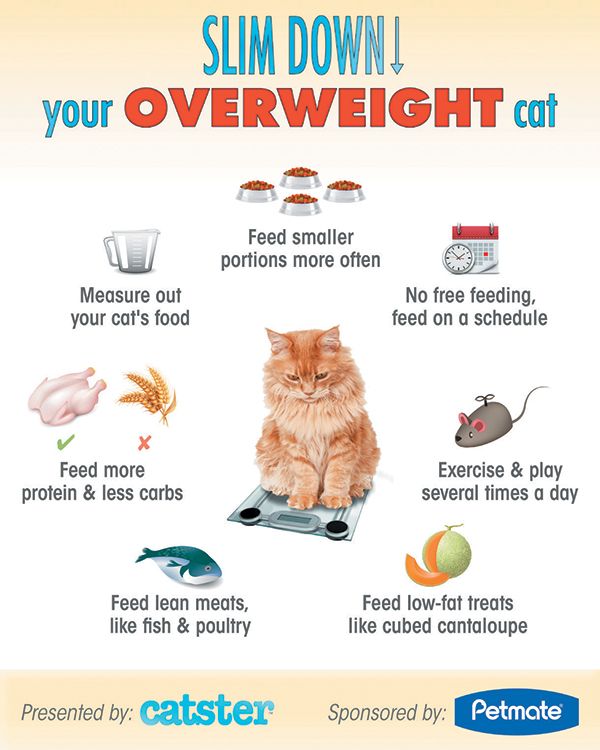How to feed sweet potato for baby
Favorite Sweet Potato Baby Food (BLW & Pureed)
With one super simple cooking method, you can roast sweet potato wedges to serve one of three yummy ways—BLW style, mashed, or pureed into classic sweet potato puree. It’s the easiest way to make sweet potato baby food. (And the rest of the family can enjoy it, too!)
Sweet Potato Baby Food
Sweet potato is a perfect baby food. It’s nutritious, naturally flavorful, and cooks up nicely and softly. And no matter whether you’re starting your baby with the Baby Led Weaning style of feeding or more traditional purees, this one cooking method will work beautifully. And you can serve it to everyone at the table—big kids and grown-ups alike!
This recipe makes roasted sweet potato wedges, which you can serve as is or mash or puree them smoother with a fork. So easy.
This recipe has vitamins A and C, as well as fiber and healthy fats from the olive oil. It’s a perfect food to serve to a 6-month baby or older who’s starting on solids—or who is well-accustomed to eating.
Your toddler won’t eat? Help is here!
Sign up for our email updates to get tips and ideas sent to your inbox.
Please enable JavaScript in your browser to complete this form.Email *
Comment
Ingredients You Need
To make this roasted sweet potato baby food, you just need the following ingredients.
- Sweet potato: Look for a medium to large sweet potato with orange flesh for the best flavor. These are sometimes called “garnet yams.”
- Olive oil: I use extra virgin olive oil, such as this one from California Olive Ranch. You could also use avocado oil if that’s what you have.
- You can add salt to taste to your portion, though you’ll want to set aside a serving for your baby before adding salt.
Step-by-Step Instructions
Here’s a look at how to make this simple recipe. Scroll down to the bottom of the post for the full information.
- Choose a medium to large sweet potato with orange flesh. They are sometimes called “garnet yams” at the store.
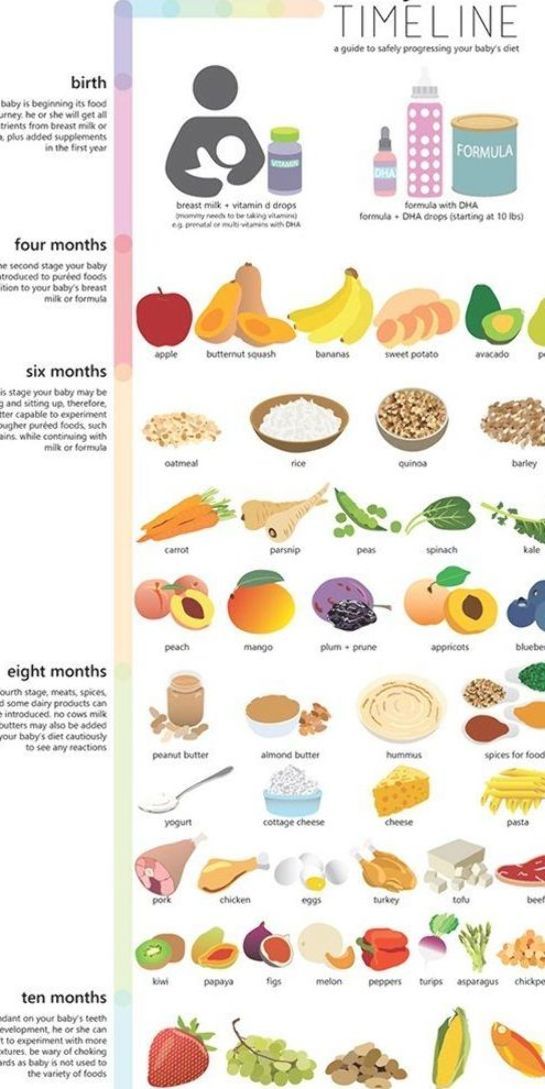
- Slice in half. Cut each half in half.
- Cut each piece in half again to make wedges that are about ½ inch thick. You can cut them horizontally, too, if you’re working with a very large sweet potato.
- Toss with olive oil in a bowl.
- Spread on a foil-lined sheet pan.
- Roast until soft.
TIP: You want the wedges to be about the size of one or two of your fingers, which is a good shape for BLW food for baby to self-feed.
Frequently Asked Questions
Is sweet potato good for babies?
It’s such a great baby food because it’s rich in nutrients and fiber, has a naturally sweet flavor, and is very soft. It’s also an affordable veggie and stores well in the kitchen in a cool, dark place around room temperature.
Can I add seasoning to this recipe?
You can add crushed rosemary or cinnamon to this recipe. If serving to adults or older kids, you can also sprinkle with salt after cooking and setting a few aside for baby. Babies under the age of 1 shouldn’t have added salt, but they can have herbs and spices (as long as they aren’t hot-spicy).
Babies under the age of 1 shouldn’t have added salt, but they can have herbs and spices (as long as they aren’t hot-spicy).
What pairs well with sweet potatoes for babies?
You can combine this puree with apple puree, pea puree, avocado puree, banana puree, bean puree, or anything that sounds appealing to you.
Can I feed my 5 month old sweet potatoes?
Babies can have sweet potatoes after they start solids, which typically happens around 6 months old.
How to Make Sweet Potato Wedges (BLW)
Once you’ve followed the recipe instructions, you’ll have roasted sweet potato wedges that are ready to serve. You can let them cool slightly and offer to your baby to hold and gnaw on. They also store well in an airtight container in the fridge to serve at future meals.
TIP: I like to leave the skin on my sweet potato wedges since it helps them hold together a little better when a baby eats them baby-led weaning style.
How to Make Mashed Sweet Potatoes
To serve the sweet potato as a thick mash, simply mash it with a fork. You can discard the skin and any pieces that don’t mash easily. If you want to make a larger batch, simply remove the skin from as many wedges as you want and mash in a bowl with a potato masher or in a food processor.
This stays on a spoon nicely, so you can preload it and hand it to baby to feed themselves.
How to Serve Mashed Sweet Potatoes (Stage 2)
When serving this sweet potato puree to a baby, you can preload the spoon, hand it to them, and let them feed themselves. If the baby is used to eating solids, they will also likely be able to pick it up with their fingers, as it’s pretty thick.
How to Make Homemade Sweet Potato Puree (Stage 1)
To turn the roasted wedges into sweet potato puree, simply mash with a fork until very smooth, adding a 1 tablespoon of water at a time to reach the desired thin consistency. It purees SO easily this way!
TIP: I love this cooking method because I can serve the roasted sweet potato wedges to my whole family, and either a wedge or some puree for the baby without much extra work.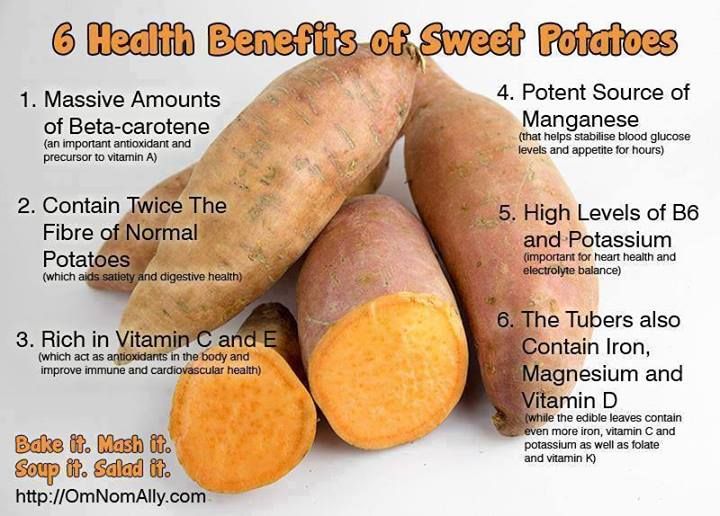
How to Store
Store any leftovers in an airtight container for 3-5 days in the fridge. You can also freeze baby food in an ice cube tray, then transfer the frozen cubes to a freezer bag for longer-term storage.
Best Tips for Success.
- You can sprinkle with salt for babies over 1 and any adults.
- Add crushed dried rosemary OR cinnamon for additional flavor.
- Spread the wedges out on the baking sheet so they aren’t overlapping. This will ensure even cooking.
- Poke a wedge with a fork or small knife at the lower end of the baking time to see if it’s very soft.
- Learn more about the basics of baby-led weaning if you are going with that style of feeding.
- You can combine this puree with Apple Puree, Pear Puree, Avocado Puree, Banana Puree, Bean Puree, or anything that sounds appealing to you.
Related Recipes
I’d love to hear what your family thinks of this recipe, so please chime in below to share!
Prep Time 5 minutes
Cook Time 22 minutes
Total Time 27 minutes
Author Amy Palanjian
Cuisine American
Course side
Calories 80kcal
Servings 4
- ▢ 1 large orange-fleshed sweet potato (or garnet yam)
- ▢ 1 tablespoon olive oil
Preheat oven to 400 degrees F and line a rimmed baking sheet with foil.
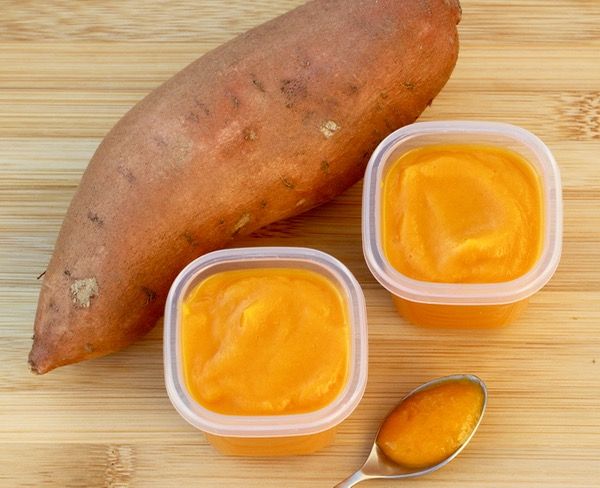 Coat with nonstick spray.
Coat with nonstick spray.Wash and dry the sweet potato.
Cut in half, then cut lengthwise into strips. Cut each strip in half again until each is about ½ inch thick. Slice in half horizontally if the sweet potato is very long. (Each strip should be about the size of your finger.)
Place into a bowl and toss with the olive oil.
Spread onto prepared baking sheet and roast for 22-25 minutes or until soft.
Let cool slightly and serve as is for a BLW-style finger food.
To serve as a thick mash, remove skin and mash with a fork one at a time or in a larger portion in a food processor or blender.
To serve as a thinner sweet potato puree, mash with a fork and add 1 tablespoon warm water at a time to reach desired consistency.
- Store any leftovers in an airtight container for 3-5 days in the fridge.
- You can sprinkle with salt for babies over 1 and any adults.
- Add crushed dried rosemary OR cinnamon for additional flavor.

- Spread the wedges out on the baking sheet so they aren’t overlapping. This will ensure even cooking.
- Poke a wedge with a fork or small knife at the lower end of the baking time to see if it’s very soft.
- Learn more about the basics of baby-led weaning here.
Calories: 80kcal, Carbohydrates: 11g, Protein: 1g, Fat: 4g, Saturated Fat: 1g, Polyunsaturated Fat: 1g, Monounsaturated Fat: 3g, Sodium: 31mg, Potassium: 190mg, Fiber: 2g, Sugar: 2g, Vitamin A: 8016IU, Vitamin C: 1mg, Calcium: 17mg, Iron: 1mg
Tried this recipe?Rate in the comments and tag @yummytoddlerfood on IG!
This post was first published August 2019.
Ultimate Guide to Sweet Potato for Babies
Jump to Recipe
Sweet potato is the perfect first food for babies. Here's how to cook it as well as serving suggestions for 6 months and up.
Jump to:- When can babies eat sweet potatoes?
- Health Benefits
- Sweet Potato Varieties
- Are sweet potatoes safe for babies?
- Selecting the Best Sweet Potatoes
- Cooking Methods
- How to Cut for Baby Led Weaning
- Frequently Asked Questions
- Additional sweet potato recipes for babies
- How to Cook Sweet Potatoes for Babies
When can babies eat sweet potatoes?
This nutritious vegetable can be offered to babies as soon as they’re ready to start solids, usually around 6 months. It’s important to remember that your baby is unique and that rather than going by the calendar, you need to make sure your baby is DEVELOPMENTALLY ready to start solids.
It’s important to remember that your baby is unique and that rather than going by the calendar, you need to make sure your baby is DEVELOPMENTALLY ready to start solids.
If you’re unsure, be sure to grab my FREE handout!
Health Benefits
Sweet potatoes are an excellent source of beta carotene, vitamin C, and potassium. In fact, orange sweet potatoes, along with carrots, are one of the best food sources of beta-carotene.
Once consumed, the body converts it to vitamin A, which is key for good vision, cell growth, and a healthy immune system.
They are also a great source of both soluble and insoluble fiber, which play a critical role in improving gut health.
Sweet Potato Varieties
Did you know that there are thousands of varieties grown around the world? They come in various sizes, shapes, colors, textures, and flavors. But they can be narrowed down to these three flesh colors.
- Orange flesh, which includes Garnet and jewels, are the most common variety.

- White or cream flesh, such as Korean sweet potatoes and Murasaki, are starchier and drier in texture.
- Purple flesh, such as Stokes and Okinawan, have a rich and creamy texture. They are also denser and drier than the orange sweet potatoes
They contain similar vitamin and mineral content and are are all wonderful to introduce to your baby. Where they differ is their antioxidant profile.
The orange-fleshed ones are rich in carotenoids whereas the purple varieties are rich in anthocyanins. White-fleshed sweet potatoes have the lowest amount of antioxidants.
Are sweet potatoes safe for babies?
As long as they are offered in an appropriate size and texture, it is safe. Let me show you how!
Note that sweet potatoes (organic and conventional) contain arsenic and other heavy metals that are found in the soil and water. While this may be concerning, it's nearly impossible to avoid these contaminants. So DON'T stop offering!
Just like with rice, as long as you are offering a wide variety of foods and not serving carrots all the time, there's no need to worry.
Selecting the Best Sweet Potatoes
Look for ones that are firm and have a smooth skin. Avoid those with bruises, cracks, or signs of sprouting. Just like with beets, choose small to medium-sized, firm (6-8 ouncees) potatoes. They are generally moister and less starchy.
Be sure to sore in a cool, dark place. Refrigerating will cause them to dry out.
Cooking Methods
Here are the two best cooking methods for babies. It's VERY important that the vegetable is cooked until soft enough to be easily smooshed between thumb and forefinger.
First scrub the sweet potatoes under running water.
In regards to size, cut into big wedges (about the width of two adult fingers). Once cooked, you can cut into smaller pieces depending on your baby's age. This way you can serve both big and small pieces as I suggest below.
Steam
- Place water in a pot, add steamer basket, and bring to a boil.
- Add sweet potatoes, cover, reduce heat to medium, and cook for 10-15 minutes.
 It should be easily pierce-able with a fork.
It should be easily pierce-able with a fork.
Steam roasted
This is my FAVORITE method. Not only does it taste AMAZING, cooking with oil will aid in the absorption of vitamin A, a fat-soluble nutrient.
How it works:
The hot oven and moisture from the veggies create steam (once covered) making them soft, but because they’re roasted, the flavors become more concentrated.
Simply add sweet potatoes to a baking pan, toss with oil and seasoning(s) of choice, COVER, and roast at 425°F for 20-25 minutes! Perfectly soft and flavorful!
It's ok if they overlap a little bit. It will create more steam resulting in softer carrots.
Learn more about steam roasting as well as cooking times for ALL other vegetables
Whole Baked
- Line baking sheet with parchment paper for easy clean up.
- Pierce all over with a fork or knife.
- Bake at 400 degrees Fahrenheit for 45 minutes to an hour, until super tender and easily mashable.
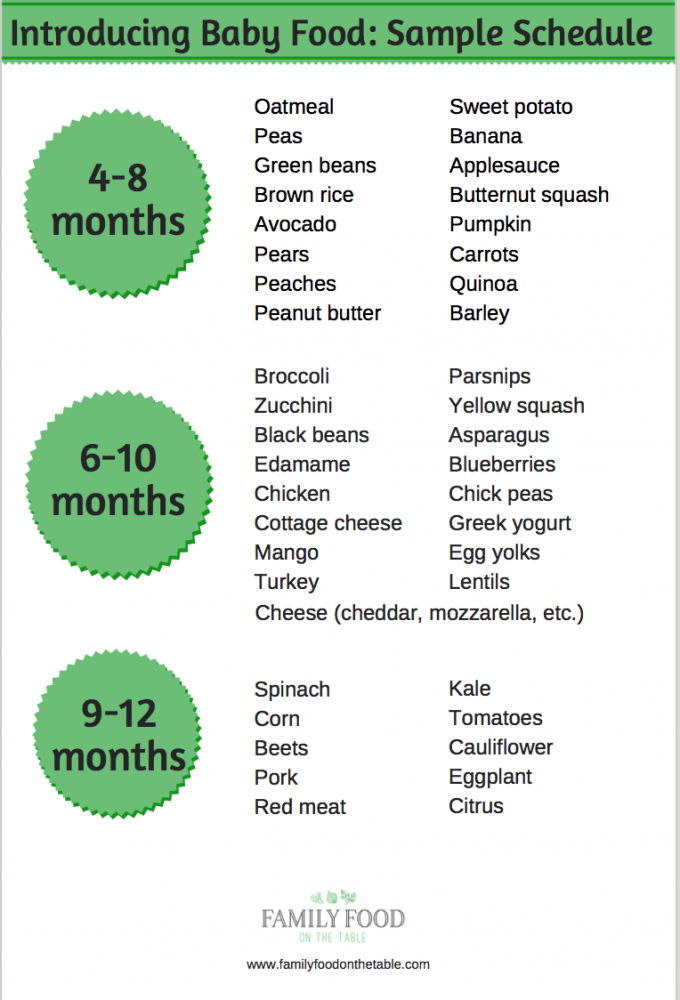
- Peel the skin and mash!
Instant Pot
Here's everything you need to know to make the best mashed sweet potatoes!
How to Cut for Baby Led Weaning
6+ months old
Pureed - Add cooked sweet potatoes into a blender and blend until smooth. Add breastmilk/formula, water, or even broth to thin out to desired consistency.
Mashed - Whether you are advancing in texture after doing purees or starting with baby led weaning, this is such an easy and versatile way to serve sweet potatoes to your baby.
Simply mash with the back of a fork and add to:
- Homemade baby oatmeal
- Quinoa
- Lentils
- Chia Pudding
- Overnight oats/quinoa
- Toast
- Yogurt
- Sweet potato quinoa patties
- Sweet potato chickpea cookies
- Sweet potato tots
6-9 months old
Bigger is better and safer at this age so your baby can easily grab the food with their palm and bring to mouth.
Examples
These are actual plates that I served to my daughter at this age. If interested in learning more, check out my 3 month meal plan.
- Orange sweet potato wedge + oatmeal + broccoli
- Purple sweet potato wedge + Shrimp mash
- Sweet potato bean mash + steam roasted red bell pepper strip
- Instant Pot mashed sweet potatoes
9+ MONTHS OLD
As your baby develops their pincer grasp and is able to pick up small pieces of food using their thumb and forefinger, you can cut into small, bite-sized pieces. I still suggest continuing to offer larger pieces so they can practice taking bites.
If you haven't already, this is a good time to introduce utensils. Your baby will most likely just play around or toss it. But it’s still great for exposure!
Try forking a piece of squash and plate on their plate. Be sure to continue modeling. They are like sponges and learn by watching you!
I also encourage you to offer mixed foods often before your baby becomes more selective. If they’ve never had foods touching and mixed together, it will be much harder to get them to eat these later on.
If they’ve never had foods touching and mixed together, it will be much harder to get them to eat these later on.
Here are some family-friendly meals to help get you started!
- Creamy sweet potato sauce pasta
- Chickpea lentil chili
- Chicken quinoa casserole
- Sweet potato quinoa lasagna
Frequently Asked Questions
How should I store leftovers?
Transfer to an airtight container and keep in the fridge for up to 5 days. Since they're very soft in texture, I don't recommend freezing them. If you have a lot of leftovers and want to invite more variety, add them to the recipes I suggest below!
How should I reheat leftovers?
Again, because the florets are so soft, reheating will only make them mushier. Serve straight from the fridge or allow to come to room temperature.
Can I freeze cooked sweet potatoes?
Yes! Cool completely and transfer to a freezer bag or container.
Additional sweet potato recipes for babies
Here are some easy, healthy, and delicious recipes to enjoy with your baby. Try incorporating different types of sweet potatoes, if possible, for variety.
If you want to learn how to prepare other specific food(s), check out my How To Series!
How to Cook Sweet Potatoes for Babies
Sweet potato is the perfect first food for babies. Here's how to cook it as well as serving suggestions for 6 months and up.
5 from 2 votes
Print PinPrep Time: 5 minutes
Cook Time: 25 minutes
Total Time: 30 minutes
Servings: 4
Author: Min | MJ and Hungryman
- ▢
Baking Mat
- ▢ 1 medium sweet potato, peeled and sliced into big wedges
- ▢ 1 tablespoon olive oil (for steam roast)
- ▢ seasoning(s) of choice (for steam roast)
Steam
Place water in a pot, add steamer basket, and bring to a boil.Add sweet potatoes, cover, reduce heat to medium, and cook for 10-15 minutes.
 It should be easily pierce-able with a fork.
It should be easily pierce-able with a fork.
Steam roast
Add sweet potatoes to a baking pan, toss with oil and seasoning(s) of choice, COVER, and roast at 425°F for 20-25 minutes.
It's ok if they overlap a little bit. It will create more steam resulting in softer texture.
Whole Baked
Line baking sheet with parchment paper or baking mat. Pierce all over with a fork or knife .Bake at 400 degrees Fahrenheit for 45 minutes to an hour, until super tender and easily mashable. Peel the skin and mash!
To store: Transfer to an airtight container and keep in the fridge for up to 5 days. Since they're very soft in texture, I don't recommend freezing them.
Calories: 80kcal | Carbohydrates: 11g | Protein: 1g | Fat: 4g
Course Side
Cuisine American
Tried this Recipe? Tag me Today!Tag me @KidFriendly.Meals today!
Do you want to minimize picky eating and set a solid foundation for a lifetime of healthy eating habits?
Check out this 3 month mastering self-feeding program! It’s the closest thing to me being in your kitchen
cooking recipes and age limits
› ›
Sweet potatoes or sweet potatoes are great choices for baby food. It is pleasant in taste (reminiscent of a mixture of potatoes and pumpkin or carrots with added sugar) and creamy texture (in the form of a puree), is liked by many babies and rarely causes allergies. But since this product is still a curiosity in Russia, our mothers will need explanations. So at what age can you give sweet potato to children and how to cook it properly for complementary foods? nine0003
Content
- From what age to give
- The composition of the product
- Is the battery useful for children
- Can sweet potatoes cause allergies
- How to choose for children's nutrition
- Subtleties of storage
- how to prepare for primacy
- Sweet Potato Baby Recipes
- Smooth Sweet Potato Puree
- Carrot and Sweet Potato Puree
- Sweet Potato Chicken Soup
- Sweet Potato Milk Rice Porridge
- Sweet potato with peas and cauliflower
- Video: how to make sweet potato for baby food
At what age to give
American parents start giving sweet potatoes to their baby, starting at six months. This is one of the first complementary foods introduced to a baby in the US after weaning.
This is one of the first complementary foods introduced to a baby in the US after weaning.
The first sample (1 teaspoon is enough) is offered in the form of a thin, homogeneous puree. It is easily absorbed by the body of the baby. The delicate creamy texture makes it easy for the baby to swallow and digest such food. nine0003
After that, they wait three days without introducing other new foods into complementary foods. That allows you to track the negative reaction and stop feeding sweet potatoes in time.
After about 2 months, the baby can try boiled sweet potatoes, mashed with a fork or grated on a fine grater. Almost all children like its moderately sweet taste.
After a year sweet potatoes are good to combine with rice or oats to increase the nutritional value of dishes.
Can a child eat sweet potatoes raw? nine0003
Sweet potatoes contain complex carbohydrates, so the glycemic index (GI) of the product is lower (55) than that of the usual potato (from 70).
Is sweet potato good for kids
Baby likes sweet potato puree with turmeric
Sweet potatoes can bring many health benefits to a child if they are part of a child's diet. Key properties:
- Fights constipation. Sweet potatoes are a valuable source of fiber. 100 g of the product contains about 3 g of dietary fiber, which prevent constipation and strengthen the baby's digestive tract. nine0014
- Source of beta-carotene (provitamin A). This vitamin is essential for healthy vision. Its presence in the children's menu is a must and helps to improve eye health.
- Strengthens the immune system. Vitamins C and E in the composition increase the body's defenses, help the child fight infections.
- Good for the skin. Makes her look healthy and radiant.
- Healthy calories. Sweet potatoes contain only 0.1 g of fat at 86 kcal per 100 g. Therefore, they are among the healthy foods for babies, especially those with insufficient weight (hypotrophy).
 High-calorie sweet potato promotes weight gain and physical development of children. nine0014
High-calorie sweet potato promotes weight gain and physical development of children. nine0014 - Prevents the development of anemia. Iron in the composition prevents anemia in a child with insufficient intake of a trace element with food or after severe blood loss (abdominal operations, injuries, etc.).
- Strengthens bones. Calcium, which is also found in sweet potatoes, is vital for the growth and development of children's musculoskeletal system.
Can sweet potatoes cause allergies
Sweet potatoes rarely cause allergic reactions in babies. That is why it is suitable for complementary foods. However, it is possible. nine0003
Signs of sweet potato allergy:
- vomiting,
- rash (including around the anus),
- diarrhea,
- bloating due to indigestion.
Vomiting and diarrhea can sometimes cause not only allergies, but also intestinal infections in the finished dish. For example, with insufficient sanitation of tubers or children's dishes.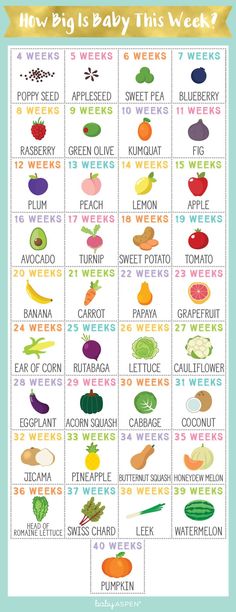
Babies may spit out sweet potato puree when switching to solid foods for a variety of reasons. nine0003
There may be other side effects, which are usually minor and easily manageable.
Caution! With ulcerative colitis and some other serious diseases of the gastrointestinal tract, sweet potato dishes are prohibited. Be sure to discuss the possibility of introducing sweet potatoes into complementary foods with your pediatrician.
Excessive consumption can provoke the formation of kidney stones.
How to choose baby food
The choice of food for a child's table should be taken seriously. If possible, choose organic sweet potatoes grown without the use of pesticides and other chemicals. nine0003
Here are a few tips to help you make your choice:
- Choose medium-sized tubers with firm, smooth skins. If they are not on sale, take small ones (large ones have a lot of starch).
- Set aside specimens that are too soft with brown spots on the skin, punctures, signs of rot, and emit an unpleasant odor.

- The richer the color of the potato skin (white/cream, pink, red and purple), the more valuable antioxidants the product contains. nine0014
Storage details
In this case, the refrigerator is not the right place. Sweet Potato Storage Options:
- in a covered box in the kitchen at room temperature for up to 1 week;
- in a cool pantry or cellar at +13-16°C - up to 2 weeks.
Sweet potato purée can be frozen in ice cube trays
Boiled sweet potato purée can be frozen in advance (a drop of lemon juice is added to prevent browning). It can be kept in the freezer for up to a year, but it is better not to use it for feeding children - during the defrosting process, bacteria quickly begin to multiply in the starchy mass. nine0003
How to cook for weaning
The first thing to do is wash the tubers thoroughly before peeling and cutting. Then remove the skin or leave (for baking) and thermally process (until soft) in one of the following ways:
- Baking.
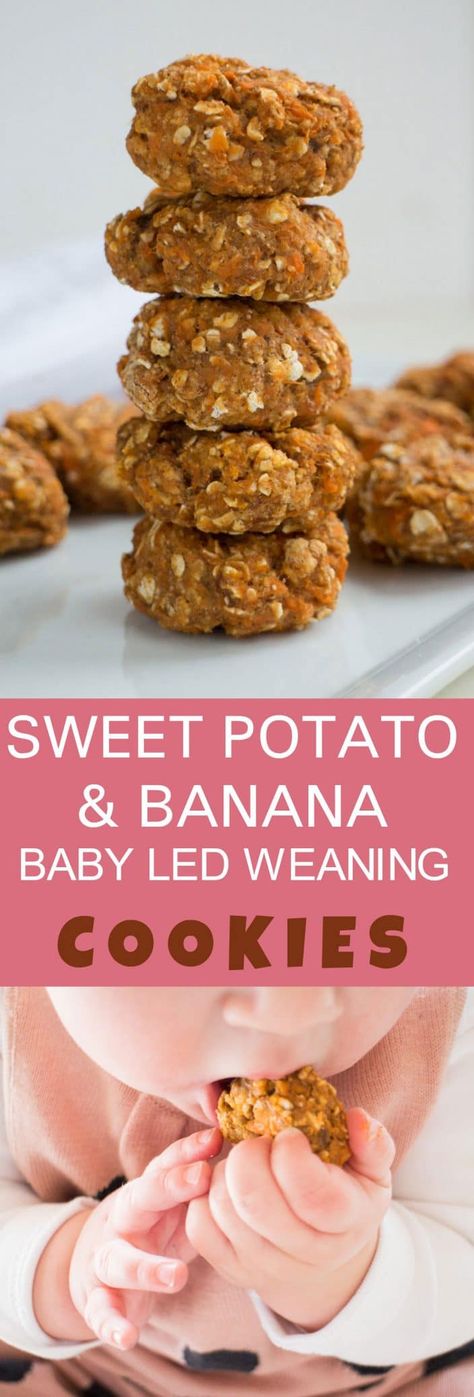 Preheat oven to 220°C. Pierce each tuber in several places and place on a baking sheet. Bake for 45 minutes. Cool and remove the skin.
Preheat oven to 220°C. Pierce each tuber in several places and place on a baking sheet. Bake for 45 minutes. Cool and remove the skin. - Cooking. Peel sweet potatoes, cut, boil in clean water. nine0014
- Pressurized (pressure cooker). Peel the sweet potato, cut into slices or cubes, place in a pressure cooker and wait for 1-2 whistles (guided by softness).
- For a couple. Peel and cut the product, place in a double boiler and cook.
- Microwave. Peeled potatoes cut into small slices and do in each hole. Place in the microwave and turn on the maximum power for about 10 minutes.
Puree cooked sweet potatoes with a blender, potato masher or regular fork. If necessary, add some boiled water. nine0003
Baby sweet potato recipes
Let's see what can be done with sweet potato for a child.
Smooth sweet potato puree
One-component sweet potato puree
Ingredients:
- 1 medium sweet potato,
- 1 glass of water or vegetable broth.
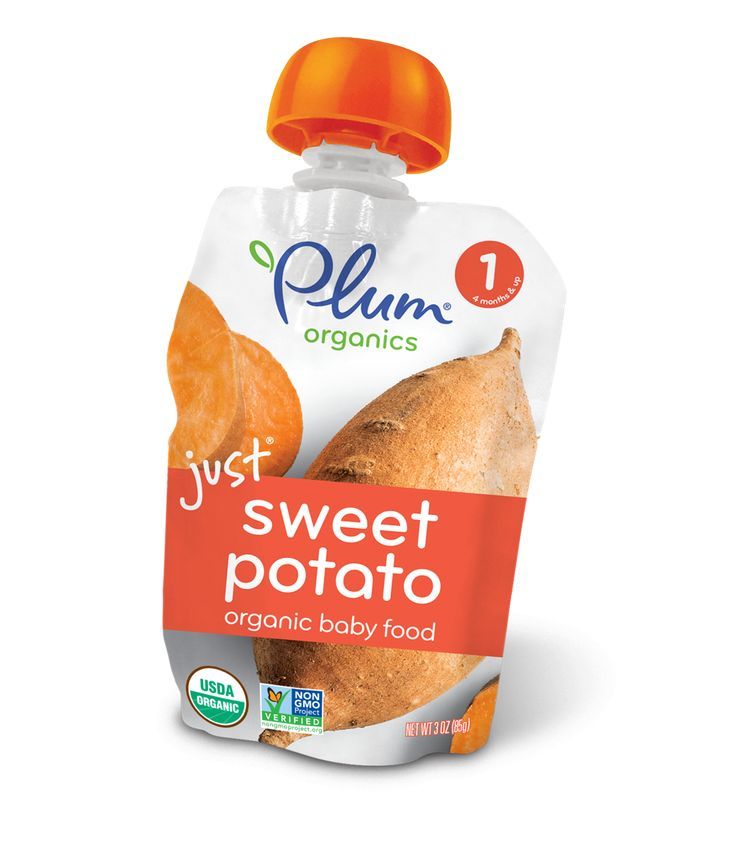
Cooking method:
- Prepare the sweet potato using any of the available methods.
- Mash while still warm.
- Add half a glass of water or vegetable stock and beat or stir well.
- Add the rest of the water/broth to make a thin, smooth puree that a child can easily swallow.
Carrot and Sweet Potato Puree
This puree is rich in vitamin A. It is suitable for babies from 7 months old who have already become familiar with mixed foods (containing two or more ingredients).
Two-component puree with carrots and sweet potatoes
Ingredients:
- 1 medium sweet potato,
- 1 medium carrot,
- 1 glass of water or vegetable stock.
Method of preparation:
- Thoroughly washed and peeled carrots, grate, and peeled sweet potatoes cut into small pieces.
- Boil them together in the same water until soft.
- Cool and puree.
Sweet potato chicken soup
This dish contains a nutritious broth rich in protein.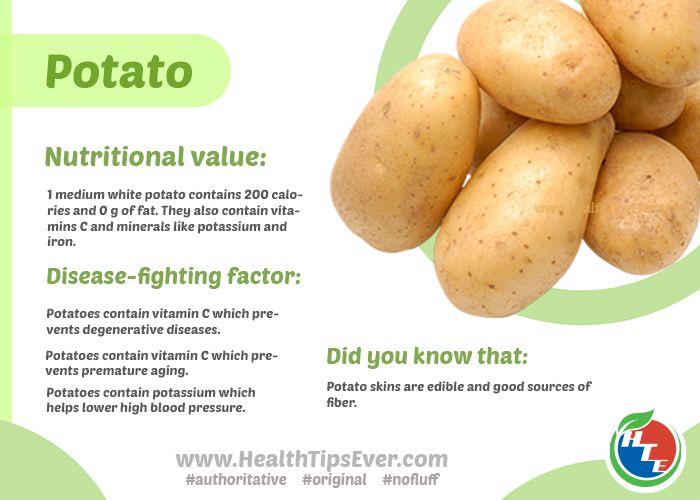 But it is only suitable for children who are accustomed to non-vegetarian food.
But it is only suitable for children who are accustomed to non-vegetarian food.
Sweet Potato Chicken Soup
Ingredients:
- 100 g lean chicken mince,
- 5 cups water,
- 1 cup boiled sweet potato.
Cooking method:
- Boil the minced chicken in a saucepan with a little water. Don't forget to skim off excess fat while boiling. nine0014
- Transfer the boiled sweet potato to a blender and add the prepared chicken broth to it.
- Blend until smooth.
- If the soup is too thick, add boiled water.
Rice porridge with milk and sweet potatoes
This recipe is rich in dietary fiber, which helps prevent constipation. It is also a healthy dessert option for toddlers without the use of sugar.
Sweet potato rice porridge for children
Ingredients:
- 1 cup rice
- 4 medium sweet potatoes
- 3 cups water
- 1 cup breast, goat, coconut or cow milk.
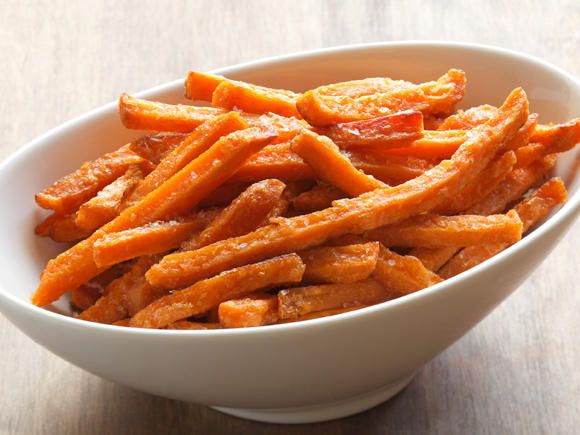
Cooking method:
- Boil diced sweet potatoes and rice in a little water.
- 10-15 minutes after boiling (when the food is half cooked), add milk and stir.
- Let stand 10-15 minutes.
- Cool slightly to serve to a child. nine0014
Sweet potato with peas and cauliflower
Another great recipe for babies from 7 months old. The dish has absorbed the virtues of three vegetables: sweet potatoes, peas and cauliflower.
Sweet potato puree with green peas and cauliflower
Ingredients:
- 1 medium sweet potato,
- 1/4 cup green peas,
- 1/2 cup cauliflower flowers, 9013 water
- (depending on desired consistency). nine0014
How to cook:
- Wash, peel and dice sweet potatoes.
- Boil all vegetables in water.
- Allow the mixture to cool slightly.
- Blend with a blender until smooth.
Video: how to make sweet potatoes for baby food
Sweet potatoes also combine with other foods suitable for baby food, such as apples, pumpkin, zucchini, legumes, corn, cabbage and broccoli. nine0003
Nutritionists recommend pairing high-carbohydrate sweet potatoes with high-fiber greens (spinach, dill, and parsley). More recommendations and recipes in our Instagram. We look forward to visiting!
Parsley for children: from what age can it be given.
Share with friends:
Author: Yakusheva Tatyana
How to properly feed a 7-month-old baby with solid food . nine0003
Carolina Plavina
Рixabay
Collected detailed information about what and how much to feed a 7-month-old baby. Also included are some interesting recipes that allow you to diversify the complementary foods menu.
Contents of the article
Do not self-medicate! In our articles, we collect the latest scientific data and the opinions of authoritative health experts.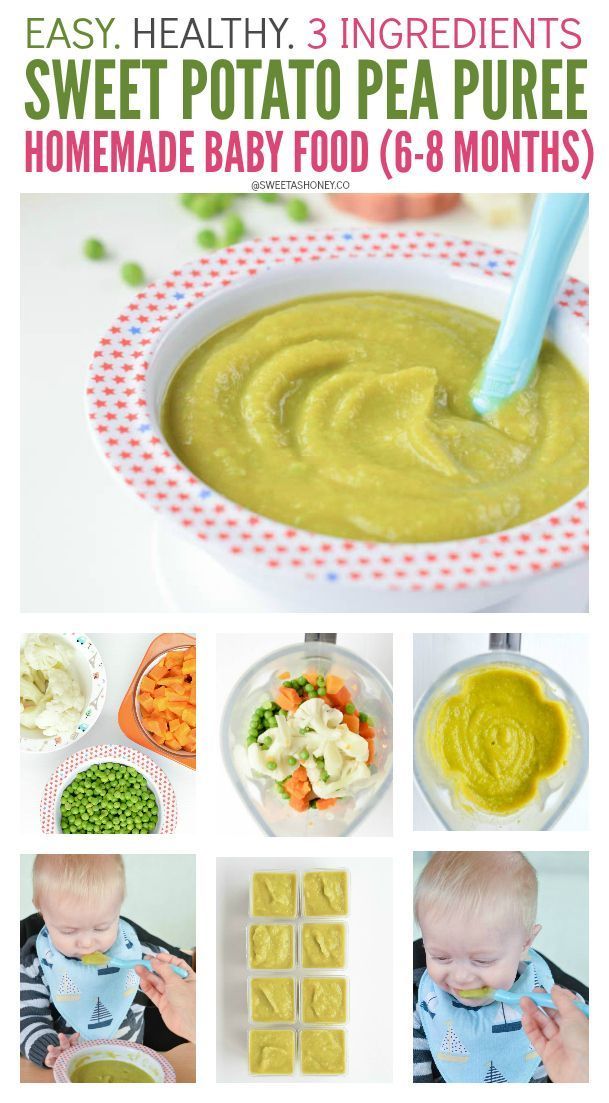 But remember: only a doctor can diagnose and prescribe treatment. nine0003
But remember: only a doctor can diagnose and prescribe treatment. nine0003
How do you know when a 7-month-old baby is ready for solid foods?
The signs below will help you determine if your child is able to digest solid foods:
- He holds his head well.
- Can sit upright on a high chair or feeding seat (no or little support).
- Tries to reach out (leans forward) for solid food.
- Opens mouth and willingly eats solid food when offered. nine0014
- Fingers capable of grasping objects.
Delaying the introduction of solid foods may affect a child's healthy weight gain. Therefore, encourage your child to eat solid food as soon as he shows signs of readiness.
A 7-month-old baby's diet can include a variety of healthy foods such as grains, legumes, meat, fish, poultry, fruits, and vegetables. With constant breast or milk feeding, children can consume these products in the form of a well-cooked puree or gruel. nine0003
nine0003
How often should I feed my baby when weaning?
Feed 7-month-old babies nutritious foods and drinks every two to three hours to support proper growth and development. If on some days the baby eats less than usual, refrain from force feeding. We have a separate article on maternal nutrition during breastfeeding.
Remember that the main source of nutrition even for a seven-month-old baby is breast milk or formula. They can get solid food, but in small amounts, as they need time to get used to the taste, texture, and digestibility of weaning food. nine0003
How much food should a 7-month-old baby eat?
The Association of American Pediatricians recommends that mothers continue breastfeeding until at least 12 months of age. Therefore, the baby can be given alternately both breast milk and solid food.
Portion sizes per day
At 7 months, a baby needs a serving of food per day, which is approximately ⅛ of body weight.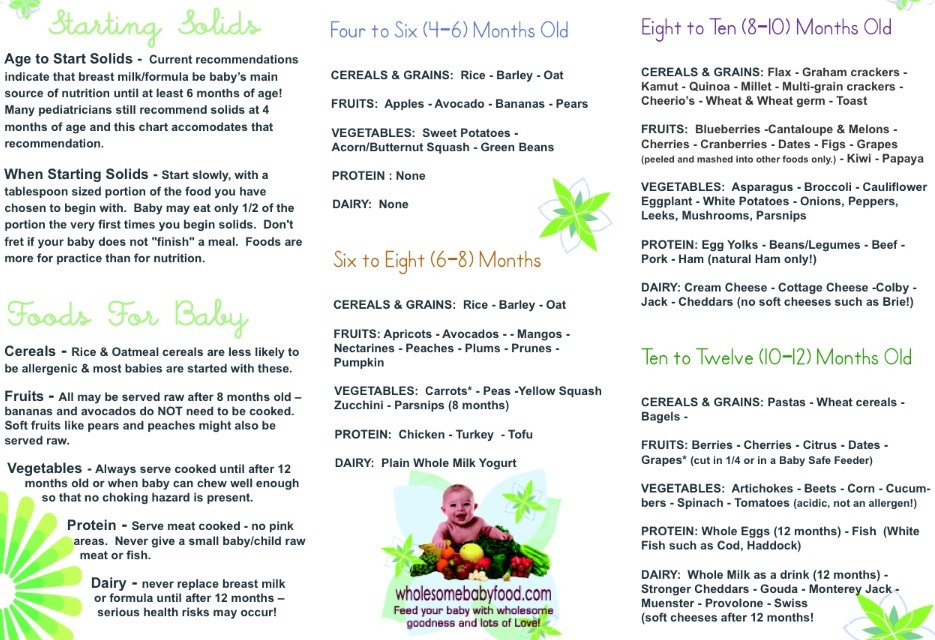 This is 1000-1200 ml of food, excluding water, juices, children's tea. Divide this amount by 5 feedings and you will get an estimated amount of food per meal - 200-210 ml. nine0003
This is 1000-1200 ml of food, excluding water, juices, children's tea. Divide this amount by 5 feedings and you will get an estimated amount of food per meal - 200-210 ml. nine0003
7-month-old meal options
Traditionally, parents start with single-grain cereal or vegetables and fruits (blended, pureed, or cooked soft). When your baby is seven to nine months old, you can include a variety of foods from different food groups in your diet.
Vegetables
Broccoli, cauliflower, peas, spinach, asparagus, parsnips, peppers, carrots, cabbage, avocados, green beans and squash. nine0003
Fruit
Banana, apple, mango, blueberry, kiwi, pear, strawberry, papaya, melon, peach, plum and orange.
Starchy foods
Potatoes, sweet potatoes, rice, porridge, oatmeal, oats, corn, millet, quinoa, cornmeal and bread.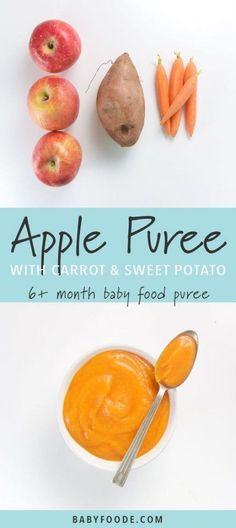
Protein-rich foods
Meat (chicken, lamb, boneless fish), eggs, legumes, lentils, beans.
Dairy products
Pasteurized full fat kefir, curd without sugar or sweeteners.
How do you prepare food for a 7 month old baby?
Boil and mash hard fruits such as apples before serving them to a child. You can mix fruit and vegetable purees with formula or breast milk. When choosing meat, you can also consider serving meat broth.
All foods should be soft so that the baby does not choke. Make sure your child eats slowly and in small portions. nine0003
Recipes for complementary foods for 7-month-old children
Omlet with onions
You will need:
1 Small bulb, cleaned and chopped
1 Egg 9000 ½ teaspoon of oil
How to prepare: 9000 9038 egg.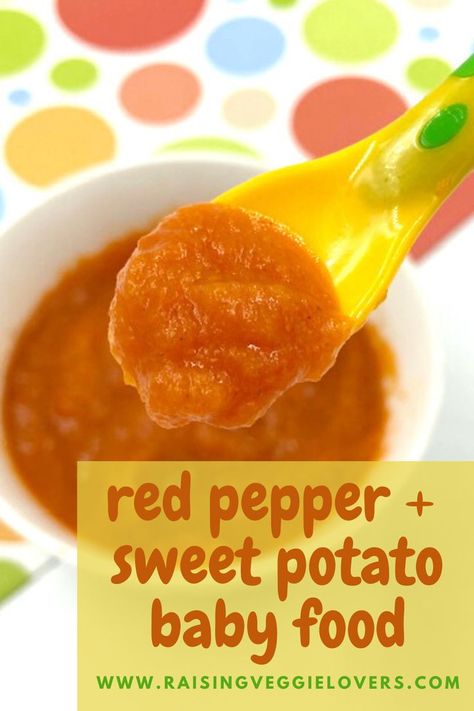 Cut the onion into small pieces and add it to the egg. Whip them together.
Cut the onion into small pieces and add it to the egg. Whip them together.
Place the butter in a frying pan. When the pan is hot, add the mixture and let it cook through.
Let the omelet cool down. Cut it into thin slices and serve to the child.
Berry porridge
You will need:
2 tablespoons of oatmeal
¼ banana
Frozen blueberries (you can use fresh blueberry oatmeal and water in a saucepan. Cook until the mixture thickens and becomes soft.
Top with finely chopped or pureed bananas and blueberries before serving. nine0003
Spicy chicken fingers
You will need:
skinless chicken breast
juice of ½ lemon
How to cook:
Take the skinless chicken breast and cut into medium-sized pieces.
Preheat oven to 200°C (approx. 400°F).
Place the chicken pieces on a baking sheet and squeeze a few drops of lemon juice over them.
Roast the chicken for 25 minutes. Once baked, it can be crumbled or given as finger food. nine0003
Avocado and banana puree
You will need:
½ avocado
1 banana, peeled
How to make:
Take it out of the saucepan and put it in the avocado. Add a banana to it and make a puree.
You can also add formula or breast milk to the puree and mix before serving.
Sample menu for the day
Breakfast (morning). Solid food :
● Porridge for infants
Liquid :
● Breast milk or formula
Snack (late morning).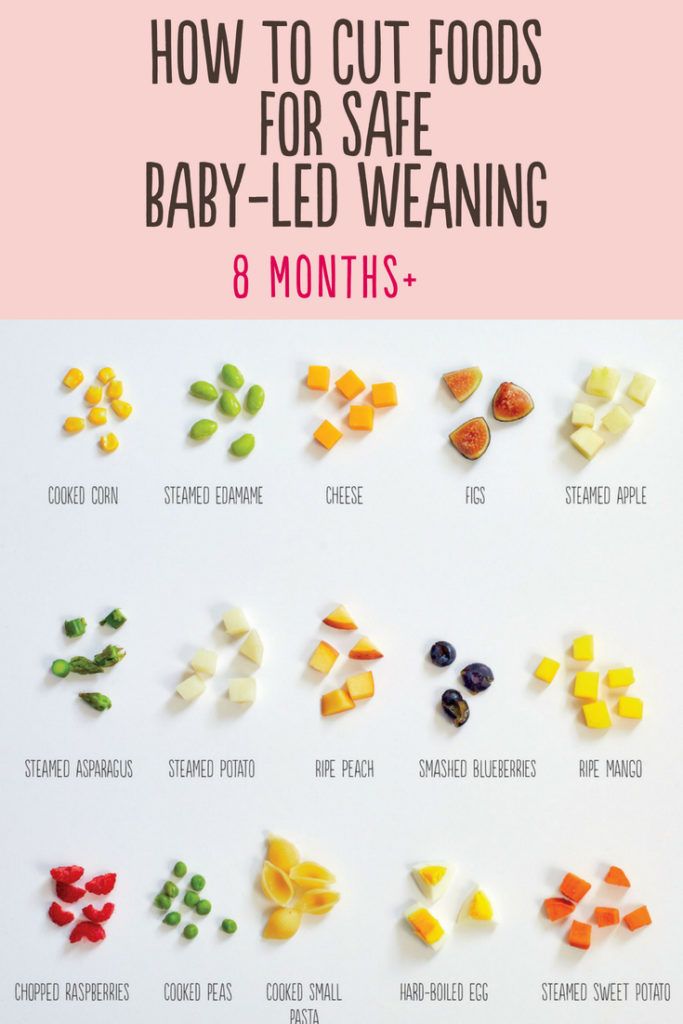 Solid food :
Solid food :
● Fruit puree such as banana, kiwi, strawberry, boiled apple, boiled pear with unsweetened yogurt (low fat).
Liquid :
● Breast milk or formula
Lunch. Solid food :
● Boiled and finely chopped chicken,
● Cooked and mashed vegetables such as pumpkin, potatoes, spinach, squash, etc. with cooked and mashed rice. nine0003
Liquid :
● Breast milk or formula
Snack (evening). Solid food :
● Boiled and mashed pear
● Boiled and finely chopped carrots or mashed beans. Dinner Solid food :
● Boiled vegetables. nine0003
Liquid:
● Breast milk or formula
Start with one or two tablespoons of food and see if your baby shows signs of hunger or satiety. Remember that their tummies are still small! You can alternate between solids and liquids depending on your child's hunger signals. You can learn more about breastfeeding here.
Remember that their tummies are still small! You can alternate between solids and liquids depending on your child's hunger signals. You can learn more about breastfeeding here.
Try to include foods with a variety of colors and textures in your child's diet. By the end of seven months, you can also slowly start introducing finger foods to develop the habit of self-feeding. nine0003
Baby's meal plan at seven months
According to the World Health Organization (WHO), complementary foods (foods other than breast milk) can be given to babies between six and eight months of age up to two to three times a day. In addition, the Centers for Disease Control and Prevention (CDC) recommends giving your child something to drink or eat every two to three hours, or about five to six times a day (10).
Feeding precautions for a 7 month old baby
Here are a few things to keep in mind when feeding your baby.
- move one ingredient at a time. Give this product for three to five days, during which time do not give any other new food. Monitor your child for signs of an allergy.
- Gradually increase the variety and quantity of food ingredients; start with a teaspoon and then move on to a tablespoon.
- You can also try finger food if your child seems ready. Your child may begin to grasp objects with his fingers when he is ready for finger food. Make sure you are present during meals to avoid the danger of choking. nine0014
- Wash, peel, remove seeds and seeds before giving fruits and vegetables to your child.
- Use a spoon to feed your baby. Make sure that during feeding the child sits on a chair with a table. Observe and respond to your child's hunger cues. Try to develop a predictable schedule for your child for all meals and snacks, and limit the time of each meal to 15-20 minutes.
- Avoid adding salt, sugar and butter when preparing baby food at home.



